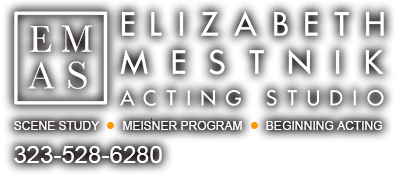Spring 2019 Beginners Acting Classes – Enrolling Now
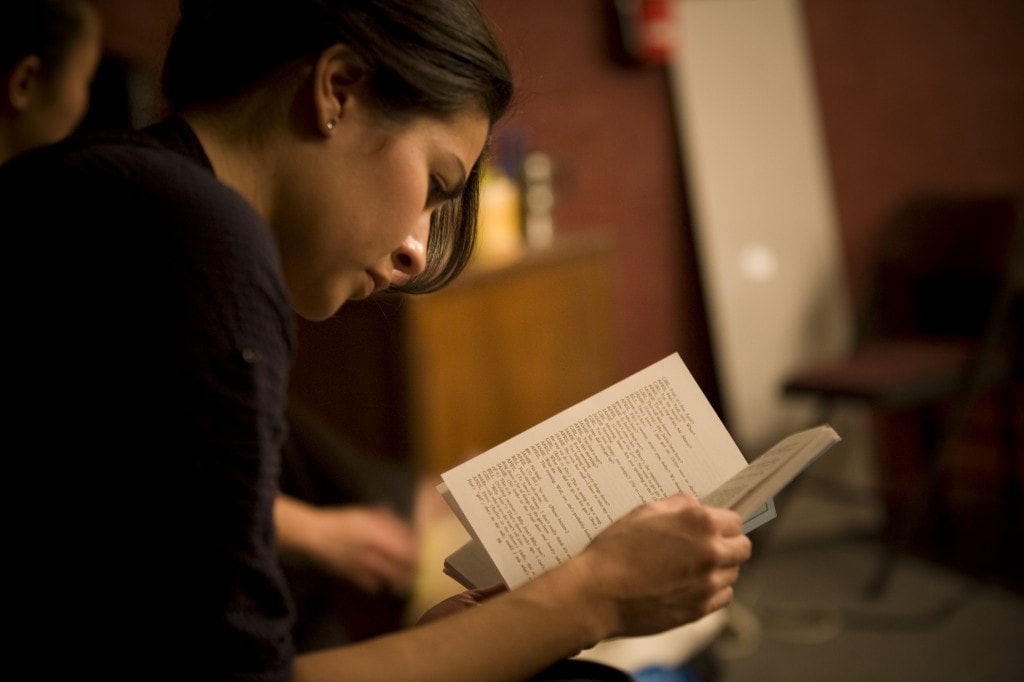
The Elizabeth Mestnik Acting Studio (EMAS) is now enrolling students in our popular Basic Technique beginning acting classes, The Character and The Script.
Beginning the week of April 1st, both classes are held weekly and last for 12 weeks:
The Character: Tuesdays or Wednesdays at 2PM
The Script: Thursdays at 7PM
Please read more or visit our registration page to reserve your slot today.
Now Enrolling: Spring 2019 Fitzmaurice Voice Workshop
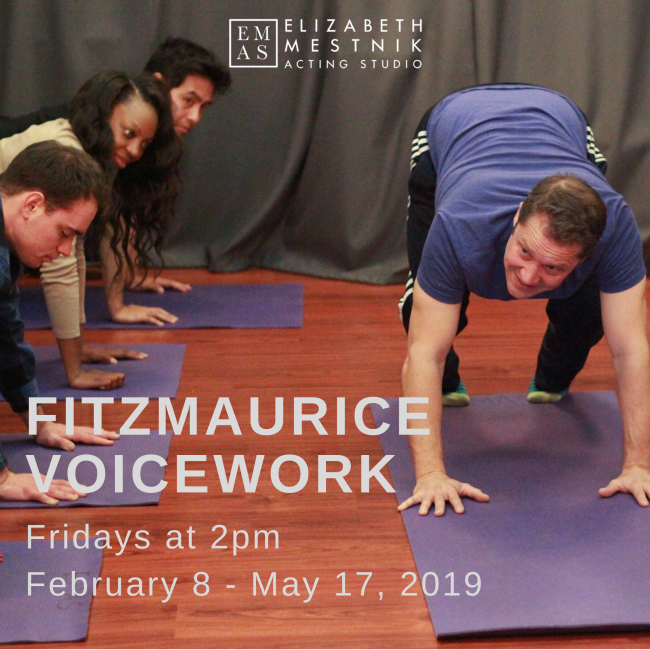
We’re happy to announce that enrollment for our 2019 Fitzmaurice Voice Workshop is now open.
Overview:
An actor is limited only by the range of his or her instrument. This instrument includes the voice, body, breath and emotional accessibility. This class allows students to add conservatory level voice training to their curriculum. The Fitzmaurice Technique is designed to let your body and voice work with freedom and full expression to access your creativity and emotional range.
The Fitzmaurice Technique is one of the world’s most widely used vocal techniques. From Julliard to The Moscow Art Theatre, actors have benefited from it’s healthy approach to speaking, breathing, and releasing emotions.
We look forward to working with you!
Enrollment:
Please feel free to contact us or reserve your spot today through the form below.
On-Set Terminology
Like any professional field, the acting industry has its own terminology, commonly-used abbreviations, and slang. Below is a quick cheat sheet for the working actor that introduces some of the common terms used by agents, directors, producers and actors themselves.
ACTION:
The term that is used when you are to begin the scene or copy. It usually indicates the camera is rolling
ACTOR’S EQUITY ASSOCIATION (aka EQUITY):
Founded in 1913 it is the labor union that represents more than 45,000 Stage Actors and Stage Managers in the United States.
A.D.:
The Assistant Director in a film or theater production.
ADR :
Automated Dialogue Replacement. Dialogue added to a scene in post production. Also called “looping”.
AFTRA:
Also known as The American Federation of Television and Radio Artists. It is a national labor union representing over 70,000 performers, journalists and other artists working in the entertainment and news media. AFTRA’s covers broadcast, public and cable television (news, sports and weather; drama and comedy, soaps, talk and variety shows, documentaries, children’s programming, reality and game shows); radio (news, commercials, hosted programs); sound recordings (“non-broadcast” and industrial material as well as Internet and digital programming.
AGENT:
An individual whose job is to represent an actor’s work to various casting directors, producers, and directors; and set up audition appointments. A big part of their job is negotiating contracts for their clients. The usual commission is 10%. Agents receive their payment as a percentage of the jobs booked.
AUDITION
An audition is where you will go to try out to get a part in a film, television or theater project. Actors read from the script or side, sing, dance, or do a monologue. The director or casting director considers if they match up with a character in the project.
AVAIL:
As in “On Avail”. It means available. A courtesy situation extended by performer or agent to a producer indicating availability to work a certain job. Avails have no legal or contractual status.
BACKGROUND:
Another term for Extras. Background actors have no speaking lines and are found filling in the background of a scene. There are different pay rates for Background actors in both SAG and AFTRA.
BOOKING:
When an actor accepts a booking, it is a legally binding verbal commitment that the actor will show up and perform.
BREAKDOWNS:
A character description of all the roles being cast in that particular project. Agents receive these breakdowns and then submit their actors on projects.
BUY- OUT:
This is a one- time payment or flat fee for a project that will not provide residuals. Buy outs are a standard agreement in all non union commercial work.
CALL TIME:
This is the time you are required to be on set. DO NOT BE LATE or it may be your last call time for that production.
CALLBACK:
A callback is when they ask back specific people from the first audition to audition again, to make a decision to cast them for a part in their project.
CASTING DIRECTOR (CD):
The Casting Director is hired by the producer or director. They audition and help choose all the speaking role actors in movies, television shows, and musicals/plays. They also serve as the liaison between directors, actors, and their agents, and they are responsible for negotiating deals with agents and for obtaining contracts for each hired actor. However, they rarely hire actors directly, but make suggestions to the producer/director.
CLOSE UP:
A tight shot of the face. Be aware of how the camera is framing you.
COLD READING:
Unrehearsed reading of a scene, usually at an audition.
COMMISSION:
When an agent or manager gets you in for a project and you book the role, that agent is entitled to a percentage of your pay. This is their commission on the project.
COPY
The script for a commercial or voice over.
COVERAGE
All camera shots other than the master shot; coverage might include two-shots and close-ups.
COVER SHOT :
An additional or extra shot of a scene, shot in addition to the master shot. Shot from a different angle, lighting, etc., and used to enhance the master shot, or to better establish a scene, setting, etc.
CUT!
The verbal cue for the action of the scene to stop. At no time, may an actor call, “cut!”
DAY PLAYER:
This is a performer hired on a daily basis for television, industrial and films. This term is used in SAG and AFTRA contracts and both unions have different pay scales. Traditionally speaking a day player will have more than 5 lines.
DEMO REEL:
This is a sample of your work on film or TV. There are also audio demo reels for voice-overs.
DIRECTOR:
The coordinator of all artistic and technical aspects of any production.
DIRECTOR OF PHOTOGRAPHY (D.P.) –
Supervises all decisions regarding lighting, camera lenses, color and filters, camera angle set-ups, camera crew and film processing.
DOLLY:
A piece of equipment that the camera sits on to allow mobility of the camera.
DOLLY GRIP (Grip)
The crew member who moves the dolly.
DOUBLE:
A performer who appears in place of another performer, i.e., as in a stunt.
EXTRA:
Background performer, used only in non-principal roles.
FIRST A.D.
First Assistant Director; person responsible for the running of the set. Gives instructions to crew and talent, including calling for “first team,” “quiet,” “rehearsal,” and “take five.”
FREELANCING:
Working with more than one agent at the same time. An actor has not signed any contracts. This is more common in New York, and not allowed in Los Angeles.
HEADSHOT:
This is an 8×10 color photo which is needed to submit with a resume to get into an audition or casting call.
HOLDING FEE:
A fee paid by the advertiser to the talent, in order to hold the commercial for broadcast at a later date.
HONEY WAGON:
A towed vehicle containing one or more dressing rooms, as well as crew bathrooms.
INDEPENDENT CONTRACTOR
For most non-union commercials and jobs where a stipend is offered, not a contractual rate, you will be known as an independent contractor. An independent contractor is responsible for paying their own taxes on that particular job; it is not taken out of the negotiated fee.
INDUSTRIAL:
Non-broadcast film or video, usually of an educational nature.
INSERTS :
Shots, usually close -ups of hands or close business, inserted into previously shot footage.
INT. (Interior):
The abbreviation for Interior – In a script it means a scene shot indoors.
“IN” TIME:
The actual call time or start time; also, return time from a break.
LINE PRODUCER
The producer responsible for keeping the director on time and budget; generally the most visible producer actually on the set.
LONG SHOT (LS):
A camera shot which captures the performer’s full body.
LOOPING: (aka ADR)
An in-studio technique used to fix dialogue already performed during principal photography by matching voice to picture.
MANAGER:
Similar to agents but they typically assist with career development and advise their clients on business and artistic decisions, as well as assisting in finding an agent. They usually take 15% commission. For more established actors Managers help with finances, publicity and other business matters.
MARK;
The exact position(s) given to an actor on a set to insure that he/she is in the proper light and camera angle; generally marked on the ground with tape or chalk.
MASTER SHOT
A camera shot that includes the principal actors and relevant background activity; generally used as a reference shot to record the scene from beginning to end before shooting close-ups, over-the-shoulders, etc.
OFF-CAMERA (OC or OS)
Dialogue delivered without being on screen.
ON HOLD:
Also known as First Refusal. When a producer likes you for a certain project you get put On Hold. It is a courtesy to let you know of a possible booking for that project and to let you know what dates to “hold” in case it leads to a booking.
OPEN CALL:
This is an audition where anyone who fits the requirements for the project can attend regardless if they have agent representation. Please be smart and only attend open calls you are right for.
PRODUCTION ASSISTANT (PA):
The Production Assistant on a particular project who is in charge of many different areas. Usually they will be the point person for the talent on set.
PER DIEM
Literally means “per day”. It is used in agreements as a daily allowance, usually for living expenses while traveling in connection with one’s work or being employed at a distance from one’s home. For example, if touring there usually is a daily per diem for food.
PILOT
A test run of a first episode of a television series idea. A pilot is an idea for a show. Actors are assembled, a pilot is shot and then the process of testing and selling the project begin.
PRINCIPAL
This is a major character in a particular project. They are at a higher pay scale than a day player and the part tends to be larger.
PRODUCER
This is someone who finds financing for and supervises the day-to-day decision making in regards to budget, equipment, location, etc of a play, film, or TV project.
RESIDUALS:
Fees paid to the actor each time a union project is re-aired. Usually pertains, to commercials, voice-overs, TV programs, and Film.
RESUME:
A list of your acting credits, training, and any other talents you think might be worth mentioning. This is a one page document, typed out and attached to the back of your headshot.
SAG:
Also known as the Screen Actors Guild is the nation’s largest labor union representing working actors. The Guild exists to enhance actors’ working conditions, compensation and benefits and to be a powerful, unified voice on behalf of artists’ rights. With 20 branches nationwide, SAG represents nearly 120,000 actors who work in motion pictures, television, commercials, industrials, video games, Internet and all new media formats.
SCALE:
Refers to the minimum amount which must be paid for a defined job. It is established in the union contracts for particular types of jobs, and can be found on all the union websites.
SCREEN TEST:
This is a filmed scene to show an actor’s ability for a specific project. It is done far along in the casting process on the actual set and with other actual cast members, usually at the producer’s request.
SESSION FEE
This is payment for the amount of time put in on set or in the recording studio for voice-overs, usually calculated in days. Residuals will come later.
SIDES:
Pages or scenes from a script, used in auditions or (if on a film set) those scenes being shot that day. Sides can be anywhere in length from a few lines to a number of pages depending on the part that is being cast.
SLATE
For on camera auditions and voice-over auditions you will be asked to slate. This is simply an introduction of who you are where you state your name and sometimes your agency. Make sure to relate directly to camera. Keep it simple and charming.
SPOT:
A commercial is often referred to as a spot.
SPEED! :
A verbal cue that the audiotape is up to speed for recording.
SPEC (Speculative):
Used most often to describe a speculative piece being pitched to others, ie Spec Short (film),.
STORYBOARD:
Usually done in commercials and animation and is actually a sequence of pictures that reflect the action taking place in a scene.
SUBMISSION:
It is the submitting of particular actors headshots and resumes for particular jobs. Submissions are done by agents and by the actor themselves
TAFT-HARTLEY:
A federal statute, which allows 30 days after first union employment before being required to join a Union.
TAKE:
The clapboard indication of a shot “taken” or printed.
TELEPROMPTER:
The brand name of a device that enables a broadcaster to read a script while looking into the camera lens.
THEATRICAL:
TV shows or feature film work, as opposed to commercials.
THREE BELLS!:
An audible warning for QUIET because a scene is about to be filmed.
TIGHT SHOT :
Framing of a shot with little or no space around the central figure(s) of feature(s); usually a close-up.
TRACKING SHOT:
A shot taken while the camera is moving, either on a dolly or a mounted on a moving vehicle.
TRADES:
Short for “trade papers” – The newspapers and periodicals such as the Hollywood Reporter and Variety that specifically feature information on the entertainment industry.
TREATMENT:
Longer version of a Synopsis of a story for a film. More detailed outline of the plot, characters, high points of a film.
TURNAROUND:
The number of hours between dismissal one day and call time the next day..
TWO-SHOT:
A camera framing two persons.
UNDER FIVE (U/5):
This is a performer hired on a per project basis for television, industrial and films. An U/5 characterizes someone who has 5 or less speaking lines.
UPGRADE:
The promotion of an extra performer in a scene to the category of principal performer.
VOICE OVER
This is the recording of a narrative to accompany a filmed commercial or TV spot. There are also voice-overs used on the radio known as radio commercials. Voice-overs are also used in the dubbing of foreign films.
WAIVER
This is when a union gives special consideration to certain cases and allows a production to deviate from standard union contract, so that the production can continue successfully.
WRAP:
The conclusion of the production. The end.
ZOOM:
A camera technique with a special lens to adjust the depth of a shot, accomplished without moving the camera.
Our Acting Studio’s Favorite Holiday Movies

The great thing about holiday traditions is that — while there are common threads — everyone has their own unique take that makes them personally meaningful. Holiday movie choices are no different. While some enjoy the widely-acclaimed classics, others are perfectly happy with a movie which, on the surface, may appear to have very little to do with the season (Famously, The Die Hard Phenomenon :).
Below, our faculty members each list one or two of the movies that have a special meaning for them around Christmas and the Holiday Season.
Elizabeth Mestnik – The Year Without Santa Claus, Miracle on 34th Street
It’s so hard to pick just one favorite holiday movie…they each serve a different emotional purpose. Nostalgia? The Year Without A Santa Clause which came out in 1974 when I was 6 is indelibly sealed in my memory. I love the Claymation and the Heat Miser and Snow Miser songs… and it even has a bit of a #MeToo bent with Mrs. Clause doing more than baking cooking cookies and dinner for Santa – she’s got real chutzpah. And the song “I’ll have a Blue Christmas Without You” will pinch a tear from even Scrooge’s eye.
But I think my favorite Holiday Movie this year (as it seems to change depending on what I’m going through each year and what I “need”) is the original Miracle on 34th Street. Edmund Gwenn is my all time favorite Santa Clause – if you can’t believe in him as Santa you really are a Grinch. My son (my youngest) is now 9 years old – and he’s come to us with the question “Is Santa real?” and I feel my heart breaking as I know this is probably the last year that a bit of the Santa Clause magic will live in our home. The family will definitely be watching this film this weekend – trying to dispel his doubts for just a few more weeks.
Sandy Egan – The Bishop’s Wife
My favorite Christmas movie is The Bishop’s Wife from 1947 starring Cary Grant, Loretta Young and David Niven. With supporting work from Elsa Lanchester and Monty Wolley. Cary Grant is an angle that comes down to earth to help David Niven learn that his wife and family is more important than the cathedral he wants to build.
Cary Grant is at his most charming who presents himself as a personal assistant to the bishop played by David Niven. He works to bring the couple together at Christmas and to remind them of their love for each other. The angel, Dudley, performs a few miracles along the way including trimming a Christmas tree and providing and older gentleman a bottle of brandy that never runs out.
My favorite scene is a choir practice where only a few boys show up. Within minutes of Dudley taking over rehearsal, boys come from far and wide and sing a beautiful hymn.
It is one of my traditions at Christmas to watch this lovely little film.
Ken Weiler – It’s A Wonderful Life
Surprisingly, even as a non-practicing Jewish kid I had a quite a few favorite Christmas movies. I loved all the old stop motion animated movies. Frosty The Snowman, The Little Drummer Boy, Santa Claus’ Is Coming To Town and the list goes on. But somewhere in my late 20’s I saw It’s A Wonderful Life. My first girlfriend Sarah and her amazing mother Sally did Christmas right and they weren’t gonna let me get away without discovering the magic of It’s A Wonderful Life.
The lessons of that film are powerful and that’s what makes this my favorite movie.
“Each man’s life touches so many other lives, and when he isn’t around he leaves an awful hole, doesn’t he?” says the angel Clarence to George Bailey. This alone makes my heart leap to my throat. Often we feel alone, we feel no one remembers us, we feel no one cares if we’re here or not. But we have all had a giant affect on one another and what makes this lesson so challenging is that we never know how significantly we affect each other.
But my favorite theme of all is encapsulated in this quote, “Dear George, remember no man is a failure who has friends.” This one gets me every time. And it needs no explanation. I live in a capitalist society, I live in a big city, wealth and influence and power are being flaunted in our faces, on our phones, on our TV’s, when we drive down the street and we pass a Mercedes or a Rolls Royce and guess what? Money is important because we have to eat, pay our bills, keep a roof over our head. But people are infinitely more important than “stuff”. And that message of no man is a failure who has friends is the most important take away of all.
This movie reflects values that are the best of us. And we can sure use some uplifting positive values in our art and in our lives.
Diana Jellinek – National Lampoon’s Christmas Vacation
My Dad called me “Audrey” a lot as a child. And he called my brother “Rusty.” We called him “Clark.” Those aren’t our names. He would even make dinner reservations under the surname “Griswold.” Fans of the movie National Lampoon’s Vacation may see where this is going.
My two sisters, older by then and on with their adult lives, had also been party to the month-long summer trips in the back of the wood-paneled station wagon on the way to Disneyland. But the joke belonged to my Dad, my brother and me. It harkened back to a time in our little family, pre-divorce, when “Clark” would pack us up and take us on epic long-distance driving adventures to see “The World Famous Sponge Docks” or other alleged “wonders.” We would fight and snack, unbuckled and bored, in the back of our “family truckster,” echoes of a movie we would later come to love and one that so oddly mirrored our experience that we soon referred to it as if it were our own story.
So I suppose it’s no surprise that National Lampoon’sChristmas Vacation is my favorite holiday movie. I don’t know if it’s the over-the-top enthusiasm of the wacky but lovable Dad-hero, Clark; the sexy but tolerant good-hearted Mom, Ellen; the gaggle of nutty relatives; or the awkward, gangly kids that tried mightily to forgive their parents’ embarrassing foibles along the way; but this movie, just like the original Vacation, so resembled our nutty home holidays and all the characters that it feels both personal and nostalgic – as if I’m watching a home movie from my own life.
One of the main ideas in both movies is that forced fun in no way leads to the experience of our starry-eyed, magazine-cover dreams. And no matter how much more “joy” we try to pack in with gargantuan lighting displays, spiked eggnog, gigantic trees, epic sledding hills, gourmet feasts, unwelcome guests, frenzied gift-giving, jaded kids, and all the other holiday hoopla, in the end, it’s the wild, nutty, frustrating, hair-pulling, dangerous and hysterical ride with our loved ones – and the TRUTH about how we feel about it all — that binds us together. Lots of memories, lot of laughs. It wouldn’t feel like Christmas without it.
Caitlin Rigney – A Christmas Story
My favorite Christmas movie without a doubt goes to A Christmas Story. Bob Clark upended the sentimental old order by making a film that almost every family can recognize and relate to over the holidays. I love how honest it is in its depiction of a family Christmas and how it has no apologies in telling the story. It was a Christmas tradition going to my aunts house on Christmas Day and sitting with my cousins in the den watching this movie marathon unfold on my grandfathers evergreen leather recliner. It connected all of us in a way I still can’t put my finger on – but I know it has to do with the Rigney sense of humor.
I mean how can one not connect or relate to childhood bullies, wanting that one very particular present from Santa, and the always hilarious turkey dinner failure. Everyone’s experienced it in their lives, whether they are willing to admit it to you or not. What I relish in in this classic tale is the scene where they are at the mall waiting in the excruciatingly long line to see Santa. As a kid I remember going to the mall to sit on Santa’s lap in order to make my parents satisfied, though I was secretly terrified of the big man in red and was told growing up never to talk to strangers. That moment in the film I relate to most. Every year I sat on Santa’s lap and every year I never knew what to say. How do I tell him what I want? And how do I talk to the coolest, most mysterious person in the world? Just like the moment in the film where Ralphie doesn’t know how to tell Santa what he truly wants more than anything in the world for Christmas. His dream present: an official Red Ryder, carbine action, two-hundred shot range air rifle. It shows the more accurate side of what it’s like to meet Santa in a mall. Its crowded, Santa just wants to go on break and they speed things along as quickly as possible so they don’t have to deal with you for too long.
And who could ever forget the soap in the mouth treatment by their mother? I certainly can’t. I’m the baby in my family and got in trouble more times than I can count on one hand for things that weren’t my fault. I somehow always took the blame for my brothers actions and thus had to sit on the kitchen counter as my mom shoved soap in my mouth. And while we’re on the topic of mothers – another classic moment in the film is when Ralphie opens his present from his aunt and has to dreadfully walk down the stairs and model the silly bunny onesie for his mother, merely for her own pleasure. Because who hasn’t received an awful outfit that they were forced to wear?
All in all though, the best moments in the film are the ones of spontaneity. And those are the kinds of films I love most. Where the meaning of ‘play’ is thriving and people are telling a story with no apologies. It’s what makes for a great film and A Christmas Story does just that.
Michael Yurchak – It’s a Wonderful Life, The Christmas Chronicles
My wife introduced me to It’s a Wonderful Life when we started dating 25 years ago. We have watched it every year since, and Christmas just wouldn’t be the same without it. I find the performances and what I feel as a heartfelt connection to the theme to be so moving. The supporting characters make the picture jump of the screen—these were the days of studio pros, and every single performance is rich and full of artistry. Henry Travers as Clarence gives a master class in character acting without ever tipping into caricature, Lionel Barrymore bursts to the front of every moment he occupies the screen, and Gloria Graham paints a perfect picture of the bad girl while still letting us in on Violet’s pain and struggle. Of course, Donna Reed is sublime, and Jimmy Stewart… is Jimmy Stewart!
Christmas finally starts when I watch this movie with my family each year, and it can’t get here soon enough!
For a new tradition (and on a bit of a personal note), we watched the Kurt Russel movie The Christmas Chronicles this year. I voiced one of Santa’s elves (the lovable (and hungry) Bjorn), and we couldn’t resist. Check it out on Netflix if there’s a youngster in your life! Bjorn says “Thanks for your support!”
Now Enrolling: Winter 2019 Acting Classes
The Elizabeth Mestnik Acting Studio (EMAS) is now enrolling for our most popular Winter courses: Our 2019 Spring Meisner Program and 2019 Beginning Acting Courses.
2019 Spring Meisner Program:
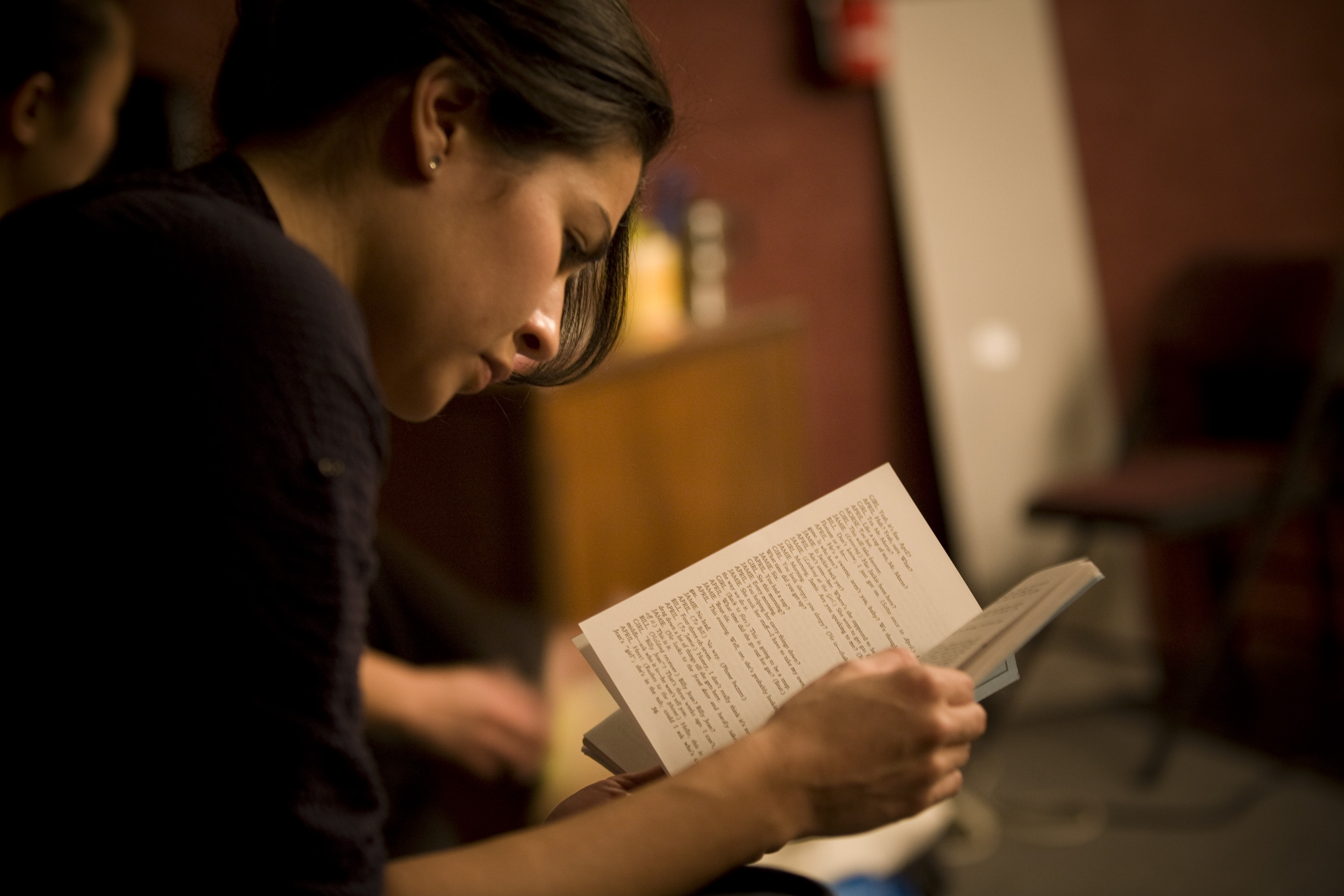
Our flagship Meisner Class Spring program runs for 8 months, beginning in January of 2019. This rigorous course is designed to give the serious acting student a solid foundation in the practice of the Meisner Technique, providing a concrete skillset rooted in accessing one’s truth to more fully relate to a character, a scene and one’s self.
Read more about our Meisner Program here, or schedule an interview today.
2019 Winter Beginning Acting Courses:
Acting Foundations; Beginning Acting
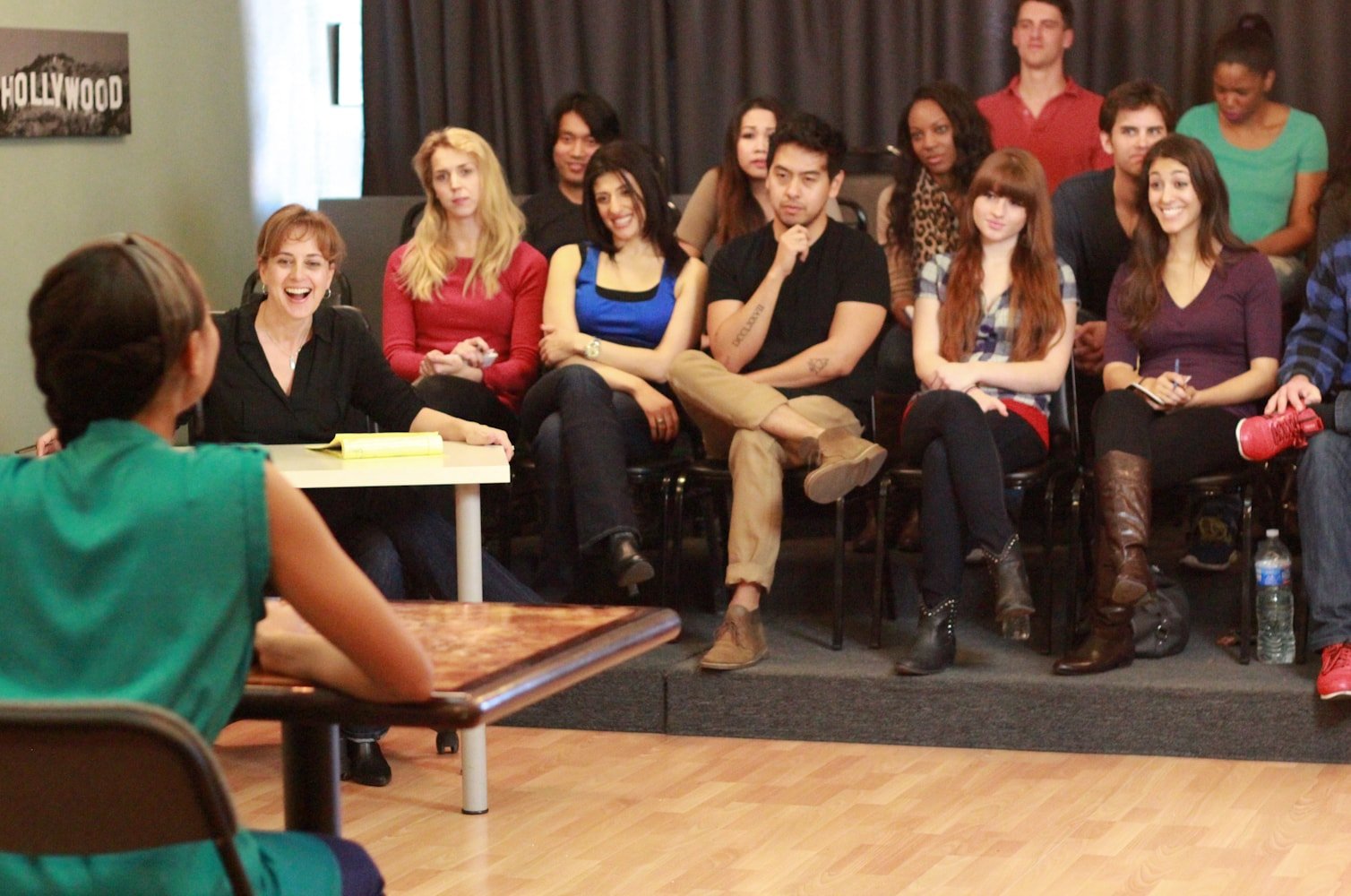
12 Weekly Courses beginning January 8th.
Our demanding but fun Acting Foundations class is designed to touch on the fundamental skills required in the acting profession. The class draws from Uta Hagen, Stella Adler, Linklater, and many other techniques to lay a foundation for engaging, exciting performances on the screen or the stage.
The Character; A Beginning Acting Class
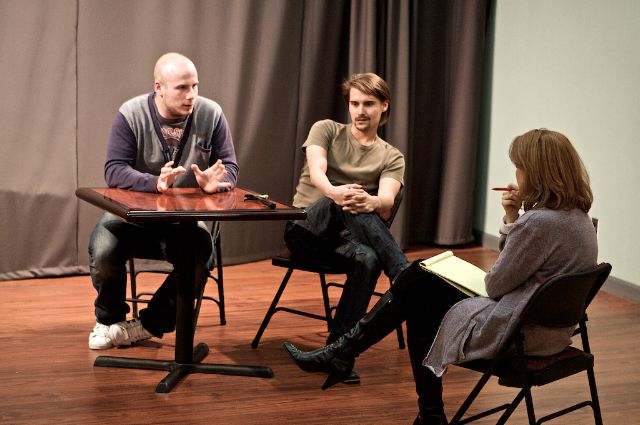
11 Weekly Classes beginning January 10th
The Character aims to give students the experience and the tools to create characters that speak to audiences. Finding a character’s voice, physicality and psychology are emphasized through exercises, improvisations, monologue and scene work.
Testimonials: Our Students’ Experience
At EMASLA, we’re determined to empower actors with the fundamental skills that make great actors.
Dante Ryan elaborates on how his training at EMAS helped him to identify and cultivate his emotions.
Brittany shares her unique experience of the Meisner Technique at EMAS.
Katie Bendi finds her emotional truth.
Meisner Monday : Putting it All Together: F**k the Text,Work off Your Partner
In today’s Meisner Monday video, students practice how to deal with strong tension with their partners.
Seventeenth Repetition Exercise: Careful with Your Crafting
This video reminds us that generalized emotion cannot be the goal of your crafting. Specificity and a direct understanding of the success or failure of what you are doing is the key. As Sandy always said “The foundation of acting is the reality of doing.”
3 Minute Meisner Monday: Working with the Given Circumstances
In this video students have added shared circumstances to the improvisation, where the person entering now has something they need from their partner. Elizabeth shows how important it is not to lose contact with your partner just because you have an objective.
3 Minute Meisner Monday: Emotional Preparation in Scene Work
The fifteenth video in our 3 Minute Meisner series, our students are encouraged to express their emote their lines as a genuine reaction to their partner and the scene. This is accomplished only through true vulnerability and openness, skills (qualities) that are honed through training and practice.

